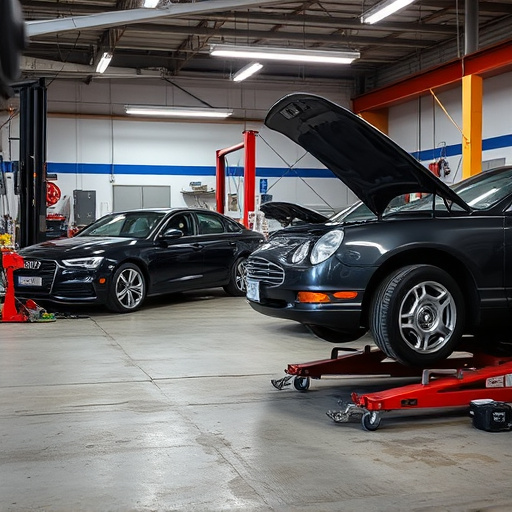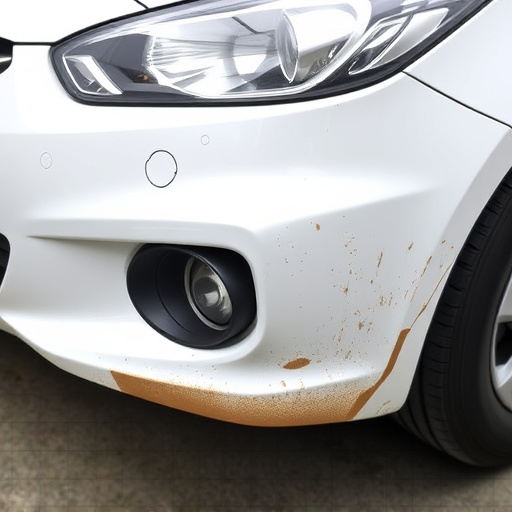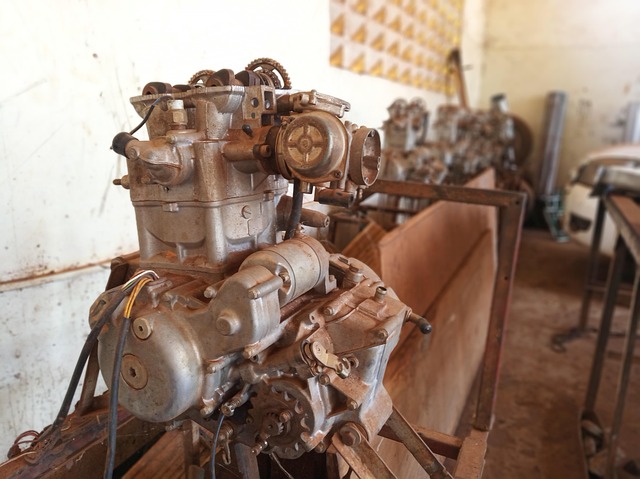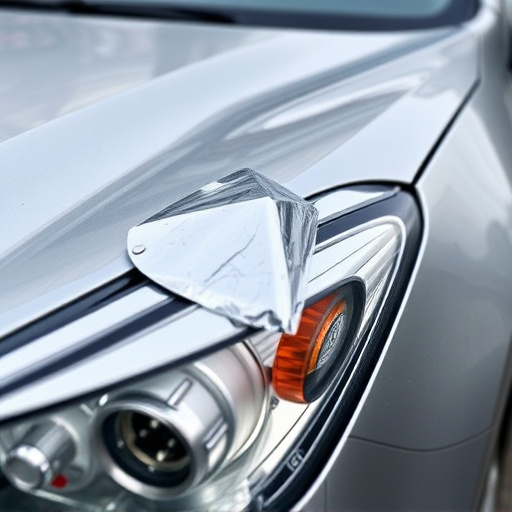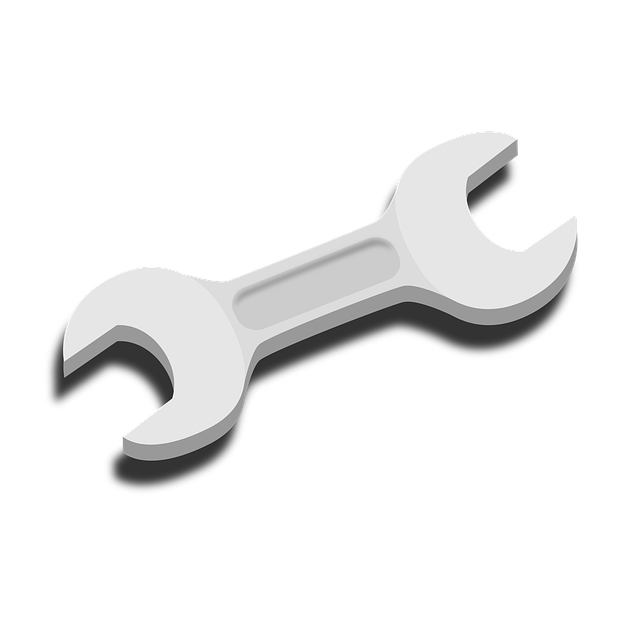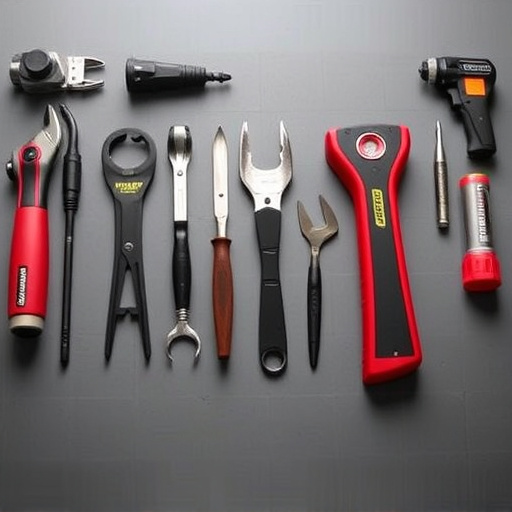Tesla's advanced cooling system, featuring intricate radiators and heat exchangers, is crucial for vehicle efficiency and longevity. Regular checks and prompt repairs are essential to prevent leaks, corrosion, and bodywork damage. A simple guide for owners emphasizes visual inspections, pressure testing, and checking connectors for subtle yet costly cooling system issues. Proactive care ensures optimal Tesla performance and guards against expensive collision center visits.
“Uncover the intricate world of Tesla’s cooling system design and its pivotal role in maintaining vehicle performance. As electric vehicles (EVs) gain popularity, understanding the unique challenges and common issues faced by their cooling systems is essential. This article delves into these concerns, offering a comprehensive guide to help Tesla owners ensure optimal integrity. Learn how to confirm leak-free lines, a critical step for sustaining your EV’s efficiency, comfort, and longevity.”
- Understanding Tesla's Cooling System Design and Its Importance
- Common Issues with Cooling Systems in Electric Vehicles
- Leak-Free Line Confirmation: A Step-by-Step Guide for Tesla Owners
Understanding Tesla's Cooling System Design and Its Importance

Tesla’s cooling system is a complex yet vital component that plays a crucial role in maintaining the performance and longevity of its electric vehicles. At the heart of this system lies a meticulously designed network of radiators, heat exchangers, and pipes, all working in harmony to regulate the battery’s temperature during operation and charging. This intricate design is not just about efficiency; it ensures the vehicle’s overall safety and reliability. A well-maintained Tesla cooling system prevents overheating, which could lead to severe consequences, including reduced battery life and potential vehicle damage.
Understanding the integrity of this system is essential for both owners and mechanics. Regular checks and maintenance can prevent leaks and ensure optimal performance. In case of any damage or leakage, vehicle collision repair experts can step in, utilizing their skills in car body restoration to fix issues without compromising the vehicle’s structural integrity. This holistic approach guarantees that Tesla drivers can enjoy seamless performance and peace of mind, knowing their vehicles are in top-notch condition.
Common Issues with Cooling Systems in Electric Vehicles

Electric vehicles (EVs), while offering numerous environmental benefits, often face unique challenges when it comes to their cooling systems. Unlike traditional internal combustion engines, EVs rely on complex thermoelectric management to maintain optimal temperatures for both battery and passenger compartments. This dependence on intricate systems can lead to several issues that impact vehicle performance and range.
One of the most common problems is coolant leaks, which can stem from various components within the Tesla cooling system. These may include faulty seals, damaged hoses, or even cracks in the radiator or condenser. Such leaks not only result in significant fluid loss but also pose a risk of corrosion and damage to sensitive car bodywork, including fenders and exterior panels. Proper maintenance and timely repairs are crucial to ensure Tesla cooling system integrity and prevent further complications that could require extensive body shop services.
Leak-Free Line Confirmation: A Step-by-Step Guide for Tesla Owners

Leak-Free Line Confirmation: A Simple Guide for Tesla Owners
Maintaining the integrity of your Tesla’s cooling system is paramount to ensuring optimal performance and preventing costly car damage repair. One crucial aspect is confirming that the lines are leak-free, as even a tiny drip can lead to significant auto repair services over time. Here’s a step-by-step guide designed specifically for Tesla owners:
1. Visual Inspection: Begin by parking your Tesla in a well-lit area and thoroughly examining each cooling line for any visible signs of damage or leaks. Check for cracks, bulges, or corrosion that could indicate potential issues.
2. Pressure Test (with Professional Tools): For a more comprehensive assessment, consider performing a pressure test using specialized tools available at your local collision center. This method detects even the subtlest leaks that may go unnoticed during a visual inspection.
3. Check Connectors and Fittings: Pay special attention to connectors and fittings, as these are common areas for leaks. Tighten any loose connections and replace worn-out or damaged parts.
4. Monitor for Unusual Sounds: Sometimes, a hissing or bubbling sound can signal a leak within the cooling system. If you notice such noises while the engine is off, it’s a clear indicator that further investigation is required, potentially saving you from costly collision center visits.
Maintaining the integrity of your Tesla’s cooling system is crucial for optimal vehicle performance and longevity. By understanding the design and common issues specific to electric vehicles, owners can proactively address potential problems. The step-by-step guide provided offers a practical approach to confirming leak-free lines, empowering Tesla owners to ensure their vehicle’s cooling system remains in top condition. This proactive maintenance can prevent costly repairs and keep your Tesla running smoothly.

